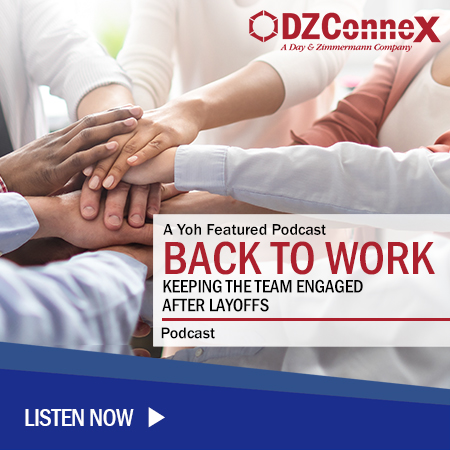In recent years, employees have been expecting more from their company leaders and demanding that their workplace needs are being met. Many people’s personal priorities shifted during the onset of the pandemic a few years ago, and this shift has lead them to become more selective with how they spend their time – including where and who they work for. Today’s leaders need to work harder than ever to retain their employees.
According to Gallup’s 2023 State of the Global Workplace report, 51% of currently employed workers say they are watching for or actively seeking a new job. This number proves that retaining employees will not come easy nowadays. Two more notable statistics from this report provide some insight into two of the reasons that employees might be looking for other opportunities:
- In the U.S. and Canada, employee stress is on the rise, with 52% of employees reporting they experienced a lot of stress the day before. This is the highest level reported since Gallup began this study in 2009.
- Trust in organizational leadership has significantly declined since the beginning of the pandemic, but in 2023 trust began to rise for the first time since then. However, still only 23% of U.S. employees strongly agree that they trust the leadership of their organization.
So in order to protect your talent and prevent more than half of them from seeking a new job, you should start by lowering their stress levels and continuing to build their trust in you as their leader. Let’s discuss some ways to do this.
Tips to Lower Employee Stress
1. Work-Life Balance
The first step toward decreasing your employee’s stress is recognizing that they have responsibilities outside of work. Encourage your team to use their PTO without feeling nervous or guilty about it. Make sure they are taking breaks throughout the day to move their body and clear their mind. Offer flexible schedules if their role allows it – this is key to balancing work responsibilities and personal ones, too.
2. Manage Workloads
Check in with your employees to make sure they can handle their assigned workload. If they are struggling, help them prioritize tasks and delegate some of their work amongst other employees where possible. Your team members should have similar workloads to ensure no one burns out.
3. Provide Resources
Occasionally offer stress-relieving resources to your employees during the workday. These resources can come in the form of yoga classes, webinars with health and wellness experts, etc., and they can have a significant impact on everyone’s wellbeing.
4. Invest in Their Work Environment
Whether you realize it or not, your environment is always affecting your stress level. Make sure your company’s office is a pleasant and clean space to work in if your employees report in person. And if they work from home, give out stipends to improve their at-home office so they have what they need to comfortably work. Simply put, if they don't like their work environment, they will not want to work.
Tips to Build Trust
1. Communicate and Provide Visibility
Be sure to keep your employees informed on any important happenings throughout the organization. Employees who know what is going on within their organization will be better equipped to excel in their job. Also prioritize having honest and open conversations about how your employees feel about your leadership performance – this will give you the opportunity to improve if necessary, and it should help you gain their respect at the same time.
2. Share Future Plans and Goals
Your team will trust you more if they know you have a plan for the team and how the team can successfully achieve its goals. Share this plan in detail with your employees and convey what each person’s role in the plan is. Trust is built when everyone is in accord.
3. Take Accountability
We all make mistakes, so people tend not to trust a leader who pretends like they never do. Whenever you make a mistake or fail at something at work, take accountability. This will make you a more relatable leader and ensure your team doesn't feel like they’re in this thing alone.
4. Show That You Value Them
Prove to your employees that you truly value them. Some ways to do this are to push for them to get a raise or bonus, to promote them, to recognize their successes, etc. Also give them autonomy in their role so they know you trust and value the work they produce. Allowing them to make their own decisions when possible will go a long way. If you trust your employees, they will likely return that trust.
Prepare for Retention Rates to Rise
If some of your employees are part of the 51% who are looking for a new job, don't give up on them. Make strides toward minimizing their stress levels and strengthening their trust in your leadership abilities to help pull them out of that group. Improving these factors will increase their job satisfaction and significantly decrease their chances of switching companies.



%20Size%20Photos/Woman%20looking%20at%20city%20and%20thinking.jpg)



